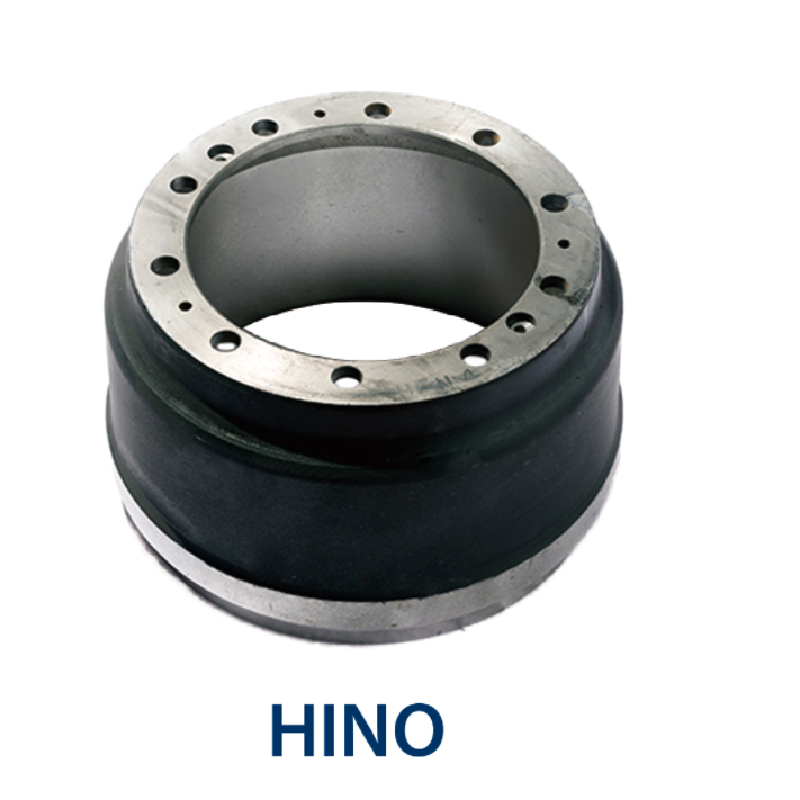Nov . 22, 2024 19:59 Back to list
brake drums definition
Understanding Brake Drums Definition, Function, and Importance
Brake drums are critical components of a vehicle's braking system, particularly in vehicles that utilize drum brakes. They play a fundamental role in halting the motion of the vehicle, thereby ensuring the safety of passengers and drivers alike. This article delves into the definition of brake drums, their functions, and their significance in automotive safety.
Definition of Brake Drums
A brake drum is a cylindrical component that houses the brake shoes in a drum brake system. Typically made of cast iron or aluminum, these drums are mounted on the wheel hub and rotate with the wheel. When the driver applies the brakes, hydraulic pressure forces the brake shoes against the inner surface of the drum, creating friction that slows down or stops the vehicle. The design of the brake drum allows for effective heat dissipation, which is crucial during repeated braking sessions to prevent brake fade.
Function of Brake Drums
The primary function of a brake drum is to provide a surface against which the brake shoes can press to create the necessary friction for braking. This friction converts the kinetic energy of the moving vehicle into thermal energy, which is dissipated. The process involves several stages
1. Pressure Application When the brake pedal is pressed, brake fluid is sent from the master cylinder to the brake assembly, increasing pressure in the system.
2. Expansion of Brake Shoes This hydraulic pressure causes the brake shoes to expand outward, pressing against the inner surface of the brake drum.
3. Friction Generation The contact between the brake shoes and the drum generates friction, which slows down the wheel's rotation.
4. Heat Dissipation As friction occurs, heat is generated. The drum is designed to manage this heat efficiently, preventing overheating and maintaining effective braking performance.
Importance of Brake Drums in Vehicle Safety
Brake drums are integral to vehicular safety for several reasons
brake drums definition

1. Effective Stopping Power Properly functioning brake drums ensure that a vehicle can stop swiftly and reliably. In emergency situations, this responsiveness can be the difference between avoiding an accident and not.
2. Durability and Longevity Brake drums, when maintained correctly, can have a long service life. However, factors such as overheating, wear, and corrosion can affect their performance. Regular inspections and maintenance are necessary to ensure they continue to function safely.
3. Cost-Effectiveness Compared to disc brakes, which are also widely used, brake drums can be less expensive to manufacture and replace. This makes them a popular choice for many vehicles, particularly older or less expensive models.
4. Design Versatility Brake drums can be designed to fit various types of vehicles, from compact cars to larger trucks, offering flexibility in automotive engineering.
Common Issues and Maintenance
Despite their robust nature, brake drums can encounter several issues that necessitate maintenance
- Warping Excessive heat can cause brake drums to warp, affecting their ability to provide uniform friction and leading to vibrations during braking.
- Cracking Over time, cracks can develop in the brake drum, compromising its integrity and braking efficiency.
- Corrosion Brake drums can be susceptible to rust, especially in regions with high moisture or salt on the roads. This can reduce their effectiveness and create additional wear on brake components.
- Brake Shoe Wear Since brake shoes press against the drum to create friction, their wear can lead to increased drum wear as well, necessitating periodic inspection and replacement.
Conclusion
In conclusion, brake drums are essential components that contribute significantly to vehicle safety and braking efficiency. Understanding their function and importance helps vehicle owners appreciate the necessity of regular maintenance and timely replacement. As technology advances, newer braking systems may emerge, but the fundamental role of brake drums in ensuring safe braking remains pertinent for many vehicles on the road today. Adhering to best practices in vehicle maintenance can prolong the life of brake drums and enhance overall driving safety.
-
Brake Drum Man - High-Quality Drum Brake Drums & Brake Shoes for Reliable Performance
NewsJun.24,2025
-
High-Quality Brake Drum Kamaz – Durable Drum Brake Drum & Brake Shoe Replacement
NewsJun.10,2025
-
High-Quality Brake Drum Liza for Drum Brake Systems - Superior Durability and Performance
NewsJun.10,2025
-
High-Quality Brake Drum Kamaz – Durable Drum Brake Drum & Brake Shoe Solutions
NewsJun.10,2025
-
Durable Kamaz Brake Drums High-Performance Truck Parts
NewsJun.09,2025
-
Premium Brake Drum Maz Kit with Shoes Enhanced Braking
NewsJun.09,2025
